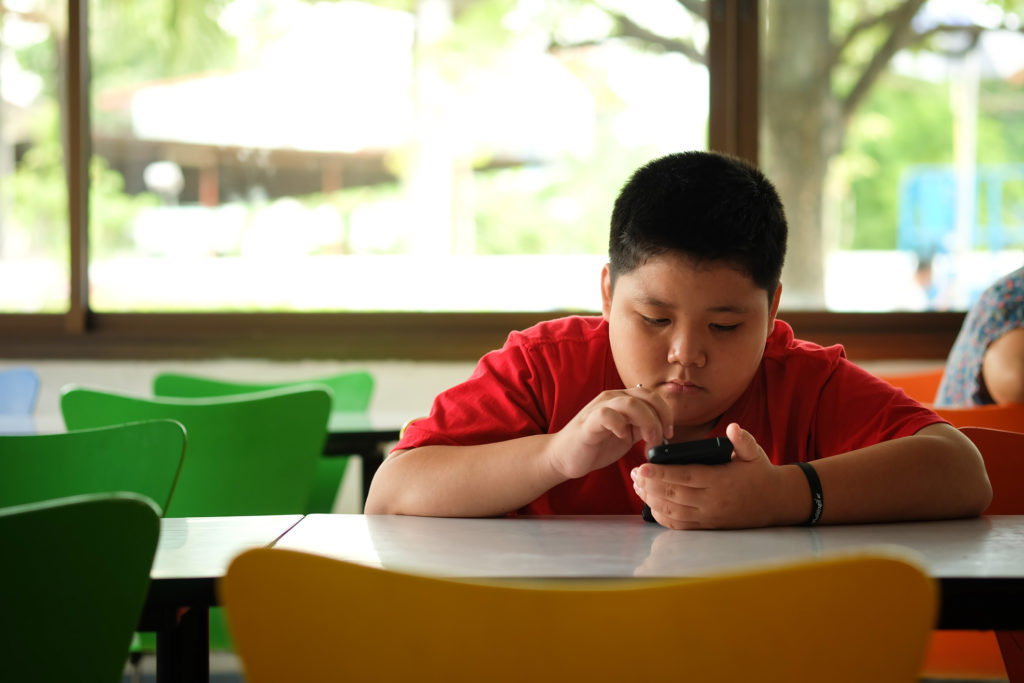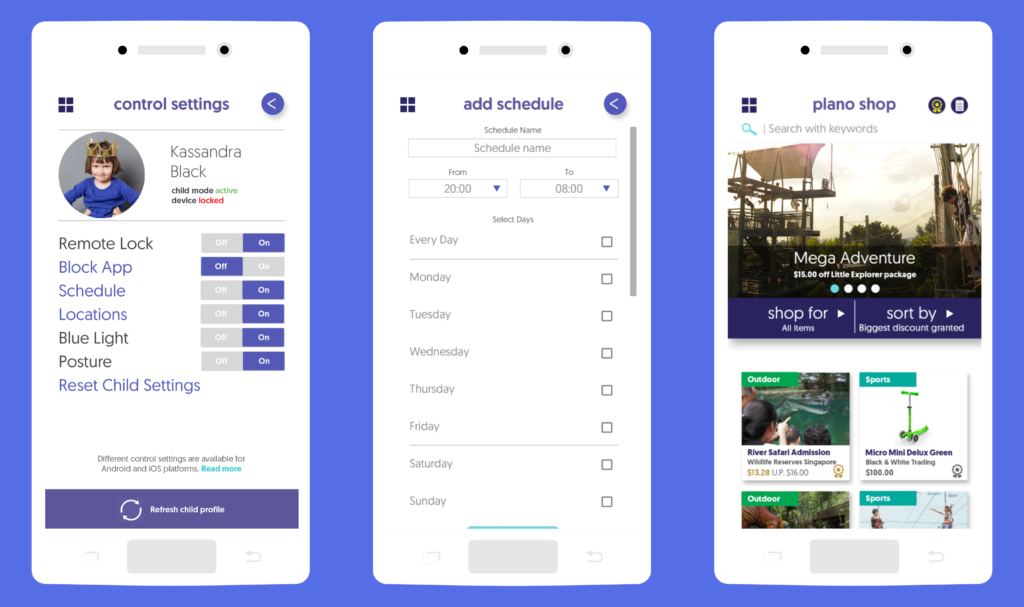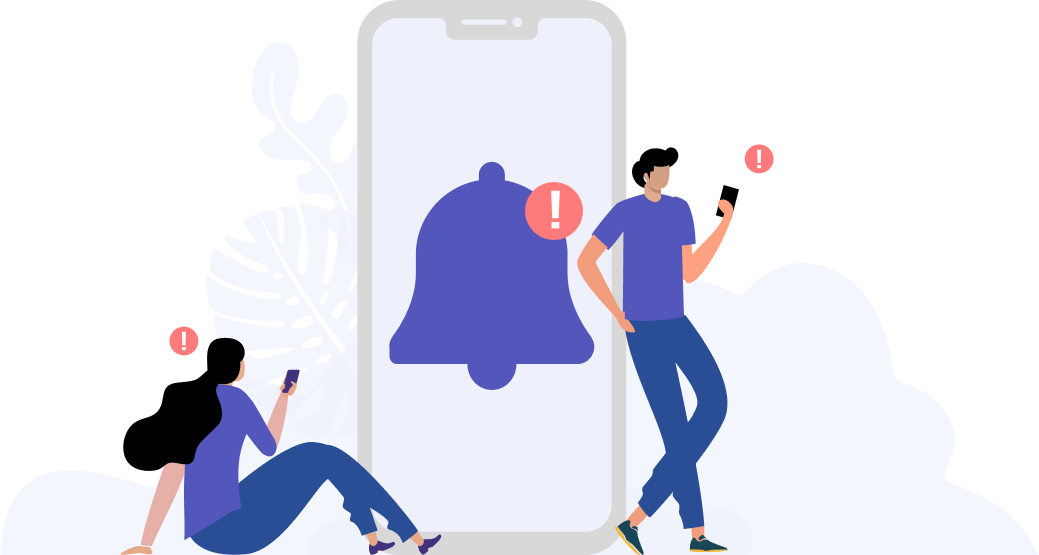Here’s How To Manage Your Kids’ Media Consumption

Do you notice your children mindlessly scrolling through their social media feeds, falling down YouTube rabbit holes or binge-watching Netflix series for hours at a time?
One of the biggest challenges that parents today face is getting the full picture of what their children are watching, reading, and who they are chatting with or listening to. In other words, as parents, it is now more difficult than ever to ensure that the digital media that our children consume daily is both safe and enriching.

Obsessed to tech devices happy african american family using digital tablet, computer, smartphones. Smiling dad teaching son to use gadgets while mom watching daughter posting in social networks.
Consuming low-quality content with little educational purposes as well as age-inappropriate content could be detrimental to children’s mental health [1].
Having a family media plan lays out how you can make media work for you and your children. Here’s how you can create one.
Key components of a family media plan
A family media plan consists of 5 key aspects:
Device-free areas
Device-free times
Media choices
Device-free activities
Digital citizenship and online safety
1. Device-free areas
Setting screen-free boundaries at home ensures that devices do not interfere with your children’s playtime and precious family bonding time.

Some common areas you should consider include:
At the Dining table: Keeping mealtimes device-free encourages conversation and bonding.
In the Bedroom: Leaving devices outside the sleeping area can reduce disturbances from notifications and calls. Research has also shown that blue light from mobile devices can interfere with sleep!
2. Device-free times
Apart from device-free areas, time blocks and device curfews are also effective in reducing mindless media consumption.
Some time periods you should consider include: In the car (for short trips below an hour), mealtimes, an hour before bed, homework time and family bonding time.
3. Media choices
Many apps and websites claim to be “educational”, but it is always better for us to do our research before we allow our children to access these pages. Do your own background checks online to make sure that the apps your children are using are age-appropriate, interactive and serve the correct educational content.
Some strategies to select the right media you can consider include:
Co-viewing or co-playing with a parent or adult: Promotes interaction and discussion of media material for more effective learning while allowing parents to stay updated with the children’s digital activity
Making it a household rule to get your child to seek your permission before downloading new apps or visiting new websites
4. Device-free activities
Real-life social interactions and play are vital parts of childhood development and learning [3]. Make it a point for children to play regularly with friends and family to allow for holistic growth.
Some device-free activities you should consider include: Reading books, outdoor play, playing with blocks, legos and puzzles and arts and crafts.
5. Digital citizenship and online safety
Our children are growing up as digital natives. By teaching them to be responsible digital citizens and how to protect themselves from online dangers, we are playing our part in creating a safer online environment for our children to explore.
Some actions you should ensure your child takes include [4]:
Alerting a parent or a trusted adult if exposed to inappropriate or uncomfortable content
Being polite and courteous in online exchanges
Respecting others’ privacy
Not sharing private information or pictures online
Not befriending or chatting with strangers online without permission
To Make Things Easier
The easy part of making a plan is making it, and the hard part is executing it and actually sticking to it. How do we make sure our children comply with the aforementioned recommendations?

plano’s parental control and eye health features empower children to create healthy device use habits that last a lifetime.
plano app is a parental management mobile app that can help. Parental control features like app block, browser block, device time scheduling and remote lock are designed for you to monitor your children’s device activity and ensure maximum online safety.
Children can also earn points with the app and redeem them for a plethora of device-free activities at a discount. Besides that, plano also serves to encourage healthy device and eye habits in your child. How does it do that? Download the plano app and try it for yourself to experience its features for free!
References:
Media Use in School-Aged Children and Adolescents. (2016). Pediatrics, 138(5). doi:10.1542/peds.2016-2592
Park, A. (2019, Jan 28). Too Much Screen Time Can Have Lasting Consequences for Young Children’s Brains. Retrieved from https://time.com/5514539/screen-time-children-brain/
The Importance of PLAY. (n.d.). Retrieved from https://www.babybonus.msf.gov.sg/parentingresources/web/Babies/BabiesPlay_and_Learning/BabiesActivities/Babies_Importance_Of_Play?_afrLoop=37268086008932535
Family Media Use Plan. (n.d.). Retrieved from https://www.healthychildren.org/English/media/Pages/default.aspx
Tools Designed for Healthier Eyes
Explore our specifically designed products and services backed by eye health professionals to help keep your children safe online and their eyes healthy.





